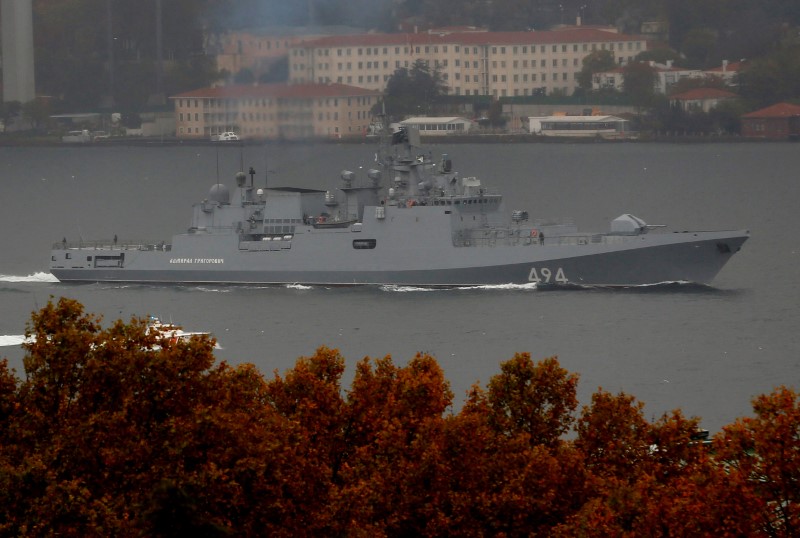Russian naval activity in Europe exceeds Cold War levels: U.S. admiral

BERLIN — Recent Russian naval activity in Europe exceeds levels seen during the Cold War, a top U.S. and NATO military officer said, voicing concern that the distributed nature of the deployments could end up “splitting and distracting” the transatlantic alliance.
Navy Admiral Michelle Howard, who heads NATO’s Allied Joint Force Command in Naples and commands U.S. naval forces in Europe and Africa, said Russia had clearly stepped up its naval actions in recent years although the size of its navy was smaller now than during the Cold War era.
“We’re seeing activity that we didn’t even see when it was the Soviet Union. It’s precedential activity,” Howard told Reuters in an interview late on Saturday during a missile defense conference.
Howard cited a wide range of activities, including Russia’s deployment of its Admiral Kuznetsov aircraft carrier to the Mediterranean, increased patrols in the north Atlantic and Arctic region, significant out-of-area submarine deployments, and submarine movement in the Black Sea.
“They’re a global navy, I understand that. But the activity in this theater has substantially moved up in the last couple of years,” Howard said.
She said there was a danger that members of the NATO alliance would focus on the area of interest closest to them, while losing sight of Russian activities in other areas.
“When … you think about what happens when they move forces around, you look at the alliance and they end up splitting and distracting the view of the alliance,” she said.
Howard’s comments came amid a sharp escalation in tensions between Russia and the United States after Washington launched 59 cruise missiles against an air base in Syria in retaliation for a deadly toxic gas attack that killed scores of people.
Howard said the Russian naval maneuvers had been matched by increased persistent cyber attacks by Moscow, and a steady number of unprofessional “fly bys” by Russian aircraft of U.S. and other allied vessels at sea.
Ties between Moscow and the West have been strained since Russia’s annexation of the Crimea region of Ukraine in 2014 and its support for separatists in eastern Ukraine.
NATO has built up physical forces in Poland and the Baltic states to build up a deterrent and underscore the strength of the alliance, but U.S. and European officials are also increasingly concerned about what they describe as Moscow’s use of propaganda and cyber attacks to influence Western elections.
Russia denies Washington’s claim that Moscow sought to influence the U.S. election, and views NATO’s buildup of troops in Europe as a provocation.
Howard said members of NATO had rallied to increase their capabilities and send a clear signal about the strength and resolve of the alliance.
She hailed a recent agreement by Germany and Norway to build new submarines together as a sign of increased cooperation and said she would welcome further efforts by European partners to pool resources.